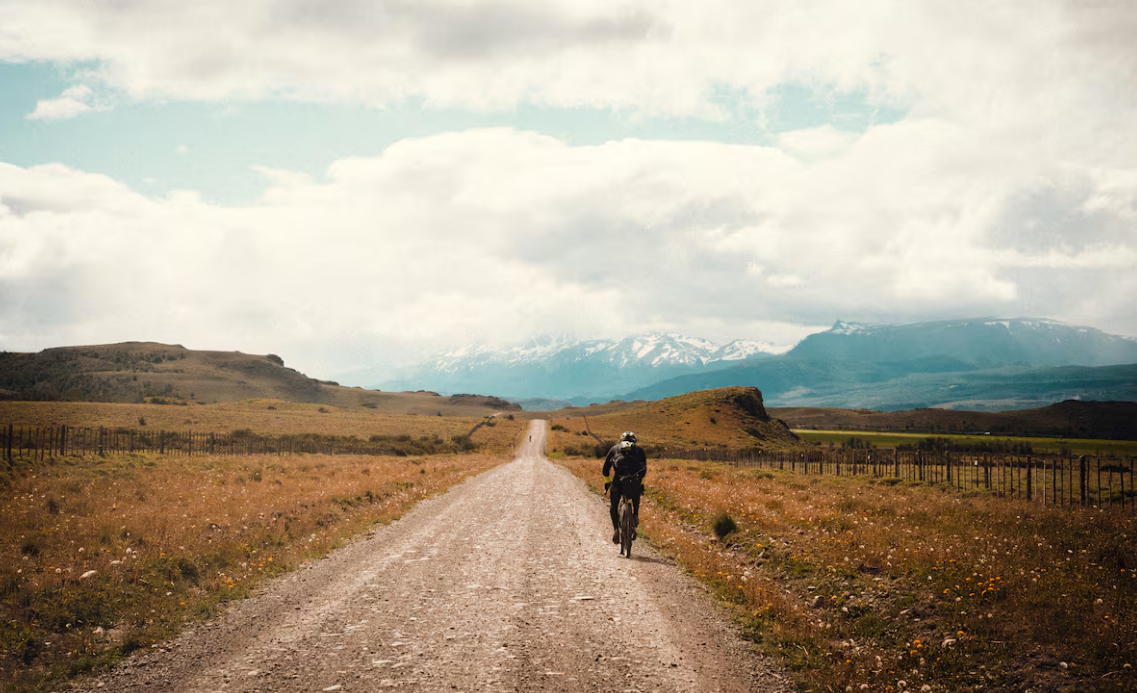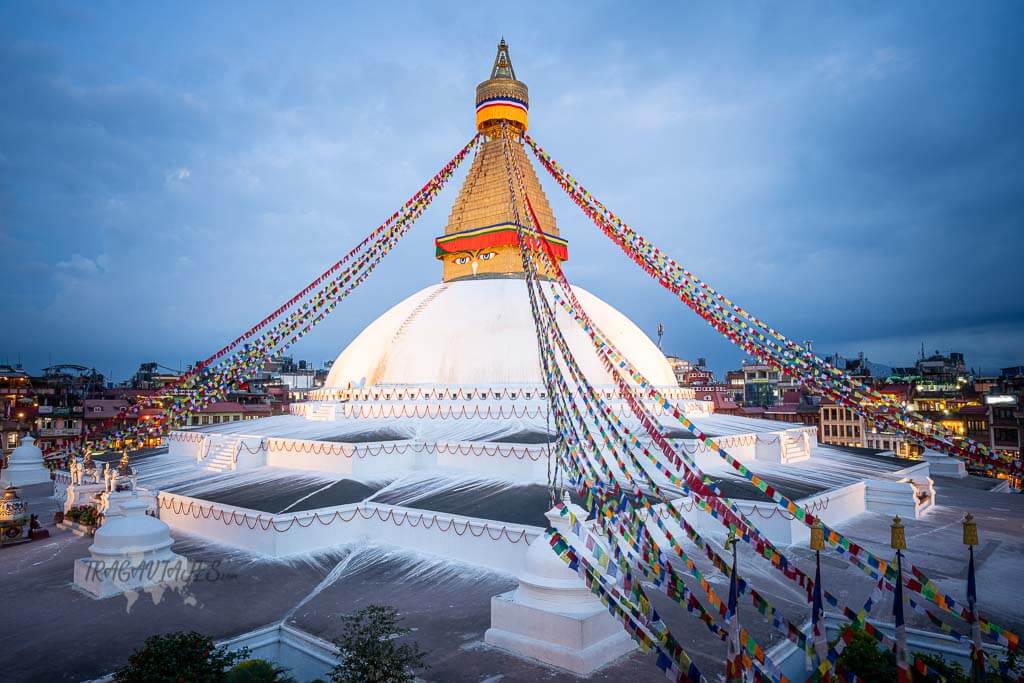“Those who rush in Patagonia are wasting their time.” The local saying echoes in my head as I pedal through the rugged landscapes of Chile’s Aysén region. It’s a mantra that feels ironic here, given that I’m competing in Across Andes, an ultradistance cycling event covering 1,000 kilometers in just five days. Gravel roads, endless climbs, and a spring climate that vacillates between mist and downpours demand both patience and endurance. Yet, despite the clock ticking, I resolve to savor the vast solitude and untamed beauty of this corner of the world.
As I catch up to another rider—a young American with sleek bikepacking gear and a smooth cadence—I notice a handwritten message on the back of his helmet: “El miedo no es fe.” Fear is not faith. It feels like a fitting motto for this journey, where fear and faith coexist in every kilometer pedaled.
A Test of Endurance, or a Way of Traveling
Across Andes is many things at once: a race for some, a time trial for others, and for a few like me, simply an adventure disguised as competition. The goal is to finish within 130 hours, but my aspirations are more modest. I stumbled into this race almost by accident, mistakenly thinking it was a stage event with comfortable hotel stops and luggage transfers. By the time I realized my error, flights were booked, and my name was on the roster.
Instead of dropping out, I adjusted my expectations. The math seemed simple: ride 200 kilometers a day, and I’d finish on time. But the reality of Patagonia’s terrain—gravel roads, heavy gear, and 15,000 meters of climbing—quickly shattered those calculations. I wasn’t racing; I was touring under pressure. And yet, this turned out to be one of the most rewarding travel experiences of my life. Even the rain, which drenched us for nearly 80% of the ride, became part of Patagonia’s unpredictable charm.
Gravel, Bikepacking, and the Reinvention of Cycling
This event also reflects a broader shift in cycling culture. Traditional pannier-laden touring bikes have given way to the sleek, minimalist setups of bikepacking—a term imported from English, much like “gravel,” the rapidly growing discipline of riding mixed terrain. Gravel riding was born in the United States as cyclists sought refuge from traffic and accidents, trading asphalt for quiet backroads. Manufacturers responded with bikes designed for stability and comfort on rough surfaces. Today, brands like Orbea embrace gravel and bikepacking as more than a trend: they represent a growing movement toward self-sufficient exploration.
Patagonia, with its endless dirt tracks and sparse population, is perfectly suited to this style of cycling. Here, riders trade speed for connection—to nature, to the road, and to each other.
The Carretera Austral: A Cyclist’s Dream
The Across Andes route begins and ends in Coyhaique, the capital of Aysén and a gateway to southern Chile. This vast region, one of the largest in the country but home to few residents, is famed for the Carretera Austral, a 1,200-kilometer highway threading through fjords, lakes, and forests. It’s a magnet for adventurous travelers, particularly cyclists.
Our loop northward leads through small settlements—El Blanco, Ñirehuao, Mañihuales, Villa Amengual, Puyuhuapi, La Junta, and Lago Verde—offering brief opportunities for rest and resupply. Streams provide drinkable water, but shelter is harder to come by, especially when fatigue or weather forces an early stop. Puyuhuapi, nestled at the end of a deep fjord, is a must-see, not only for its German-Chilean history but also for its hot springs, where riders can alternate between steaming pools and frigid Pacific waters.
Nearby, Queulat National Park greets cyclists with dramatic climbs and an iconic suspended glacier. Roads shift abruptly from smooth asphalt to rugged dirt, keeping riders on constant alert. The scenery—towering mountains, windswept plains, and dense forests—offers a relentless reminder of Patagonia’s grandeur and isolation.
Lago Verde: The End of the World
The race’s northernmost point, Lago Verde, feels like a place untouched by time. Its serene waters and distant peaks create a sense of remoteness that makes it easy to imagine leaving the rest of the world behind. Yet, despite its tranquility, the road back south brings fresh challenges, including Patagonia’s infamous weather. Sudden storms drench riders, winds howl across open plains, and the sheer distances between villages test every ounce of determination.
The Doña Inés Cyclist Refuge
In Villa Amengual, a pair of unassuming metal containers form one of Patagonia’s most beloved sanctuaries: the Doña Inés Cyclist Refuge. For riders braving the Carretera Austral, this humble shelter offers warmth, food, and camaraderie. During the 2023 edition of Across Andes, a surprise snowstorm turned it into a lifeline. Over 100 cyclists, many hypothermic, crowded into the tiny space, trading rest shifts on just 14 bunks while bikes piled up outside under thick snow.
Inés, the refuge’s founder, recalls those days with a mix of exhaustion and pride. “I didn’t sleep for two days, making sure everyone had a place to rest and eat,” she says. “I never built this for profit. I built it for travelers.” Her dedication is so widely respected that when the refuge burned down in 2017, cyclists from around the world raised funds to rebuild it within weeks.
Patagonia’s Magic
This journey through Aysén is more than a cycling challenge; it’s a deep immersion into one of the planet’s wildest regions. Every kilometer tells a story: of German settlers who carved out lives in Puyuhuapi, of glaciers that hang precariously over forests, of fjords that mirror stormy skies, and of small communities that welcome strangers with warmth.
The Across Andes event blends competition with exploration, but in Patagonia, time loses its meaning. Speed feels irrelevant in a land this vast and untamed. Here, each climb, each drop of rain, and each encounter with locals becomes part of a larger narrative: a reminder that travel, especially by bike, is as much about connection as it is about distance.



